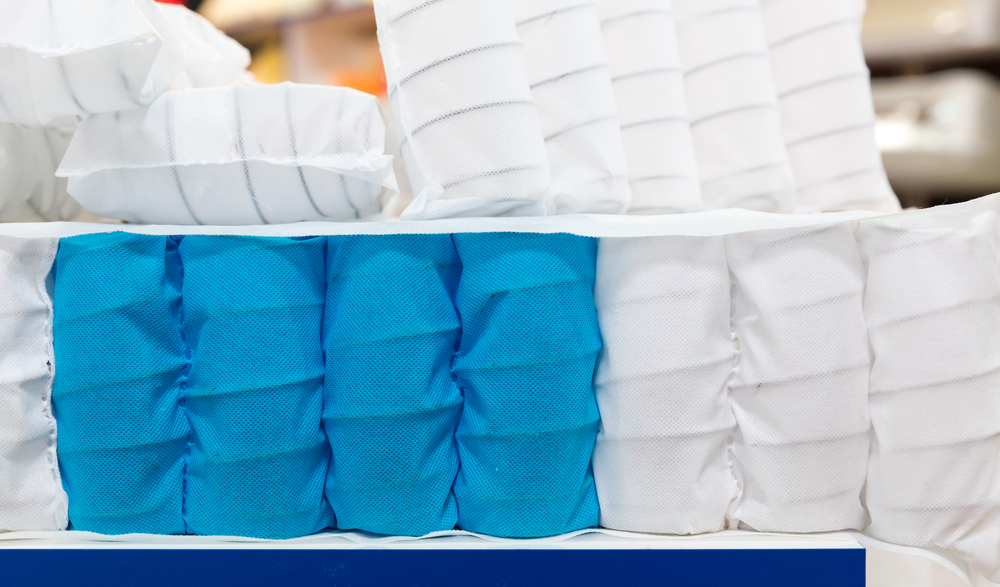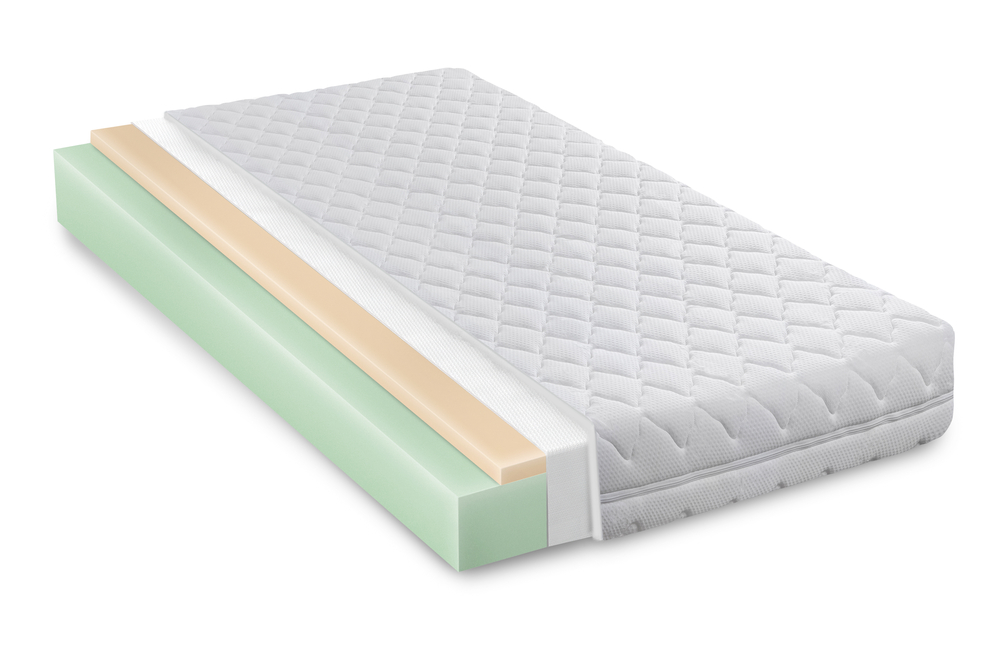
Foam vs Spring Mattress
Choosing the right type of mattress can be challenging since several mattress types in the market have various sizes and shapes. When selecting a mattress, before you even get into a large number of specific choices, there is a distinction to be considered: foam or spring.
All Mattresses fall into these two categories, but each has advantages and limitations. Below is a guide to spring vs foam mattresses.
What is a Spring Mattress

A spring mattress, commonly perceived as a traditional mattress, is made of adjoining metal coils suspended in the mattress's other substances. They are best suited for heavier people since they are firm and can offer adequate support.
Spring mattresses have three parts: the bottom part, which is the primary layout of the bed, the core, which is the principal part of the mattress and the comfort layer, which consists of fibers or foam to offer comfort.
Types of Springs
The durability and authenticity of a mattress depend on the type of spring system. Below are some different types of springs:
- Bonnell springs
- Continuous springs
- Offset springs
- Pocket springs
Selecting the type of spring system will be determined by factors such as cost, feel and stability.
Pros and Cons of Spring Mattresses
Pros
Just like any other product in the market, spring mattresses too have their advantages and disadvantages. Some of the advantages include:
- Spring mattresses are more affordable than foam mattresses
- They offer consumer familiarity
- Due to their firm structure, spring mattresses last long
- The space between them permits free air circulation
Cons
- Due to their layout, a spring mattress could be massive and difficult to move around.
- In most cases, the springs detach, and the paddings get compressed, leading to easy wear and tear.
- If you don’t clean a spring mattress, it may offer a favorable environment for antigens to grow and thrive.
What is a Foam Mattress?

Unlike the spring mattress, memory foam mattress is not made up of springs but relies on air confined within inflated substances to provide support and bounce. There are three types of memory foam mattress which includes:
1.Memory Foam
Memory foam resembles the layout of a polyfoam since it applies similar materials and procedures during manufacturing. However, there are extra chemicals used in the manufacturing stage that enhance its thickness and viscosity.
There are three primary types of memory foam: the traditional memory foam, open-cell memory foam, and Gel memory foam.
2.Polyurethane Foams
Unlike memory foam, Polyfoam is less viscous as it lacks the chemicals needed to increase density and viscosity. It is more robust and can effectively hold up the body's massive areas, such as the hips and the shoulders. A polyfoam can be adopted at both the support layer and the comfort layer.
3. Latex Foam
Latex foam is manufactured by hardening the liquid latex into a solid foam. Latex foam offers actual pinpointed support and responds immediately to every move you make.
Latex foam offers contoured support, which permits some areas of the body to go lower into the mattress while others are supported. Due to this element, latex foam is best suited to side sleepers since they need adequate support in their shoulder and hip.
Pros and Cons of Foam Mattresses
Pros of a foam mattress include the following:
- It’s viscous and elastic properties make them comfortable for sleep
- They act as a cushion and protect you from back pain
- Their dense structure prevent allergen build up
Here are a few cons to watch out for:
- Foam mattresses are very heavy making them hard to move around
- Most of them are quite costly
- When the mattress is of low density and the owner is heavy, it wears easily
- They retain heat from our bodies making it uncomfortable to sleep during hotter months
Differences Between Spring and Foam Mattresses
Spring mattresses were invented before the memory foam mattresses. However, this does not mean that one is old-fashioned and the other one technically superior. The significant difference is their features.
1. Durability
Spring mattresses are not as long-lasting as memory foam mattresses. Spring mattresses are made of springs, which are subject to wear and tear. The flexibility in coils reduces due to massive weight, and they start sagging due to extended use.
Foam mattresses rarely breakdown since they are not made of coils, which increases the risk of sagging. Memory foam mattresses are more durable than spring mattresses.
2. ventilation
Spring mattresses are good in temperature regulation due to the immense empty spaces between coils. Due to free air circulation, excessive heat is eliminated from the mattress surface, reducing the body heat.
Foam mattresses are made of polyurethane, which hinders free air passage. Therefore, memory foam mattresses retain more heat than their counterpart spring mattresses.
3. Degree of Comfort
Spring mattresses are not as comfortable as memory foam mattresses. However, they are firmer and provide adequate support due to the flexibility of the springs. Spring mattresses provide relatively little contouring leading to uneven distribution of body areas making them less comfortable.
Foam mattresses have exceptional contouring, which increases their degree of comfort, and have features that permit them to support all body parts equally. However, they offer comparatively little support than spring mattresses.
4.Pressure Relief
The coils in spring mattresses create pressure points, which is unsuitable for some sleepers due to unequal weight distribution. Sleepers experience immoderate pressure on their shoulders and hips. If you experience back and joint pains, a spring mattress is not the right option for you.
Due to the contouring feature, memory foam aligns with your body areas providing pressure relief. If you suffer from muscle and bone pain issues, a foam mattress is the best choice for you.
5.Price
If you are operating on a tight budget, buying a conventional innerspring mattress is advisable since it is cheaper. However, the modern and luxurious innerspring mattresses have more inventive features making them more costly.
In most cases, foam mattresses are more expensive than spring mattresses. Their advanced innovative features, such as the use of superior construction technologies, make them more costly.
6. Body Type and Sleeping Position
Spring mattresses are ideal for people with massive weight since the springs permit the mattress to retain its shape under pressure. However, they may not be suitable for lightweight individuals.
Foam mattresses are less supportive thus best suited for lightweight individuals and stomach sleepers.
7. Maintenance Level
Spring mattresses require higher maintenance than memory foam mattresses. They break down quickly if not well maintained. Avoid bending or folding the mattress to avoid breaking the coils.
When it comes to maintenance, foam mattresses are not exceptional. They also require high maintenance but not as much as spring mattresses. A foam mattress should not be put in the sun and as it can be severely damaged, reducing its lifespan.

I appreciate you mentioning that spring mattresses have good durability and last a long time. My son peed on the mattress. I’m looking for mattress sales to replace my old mattress.